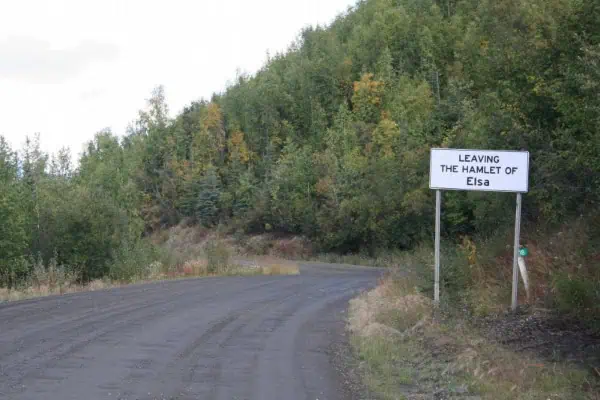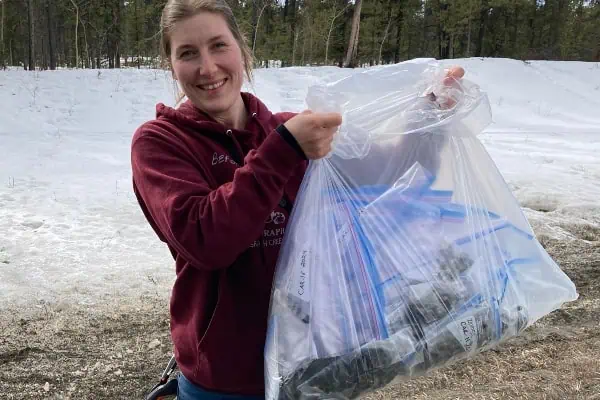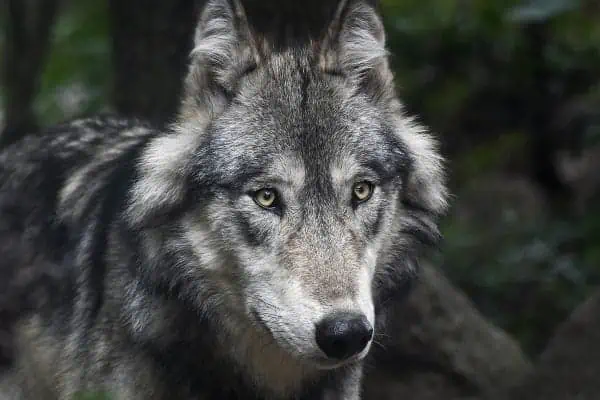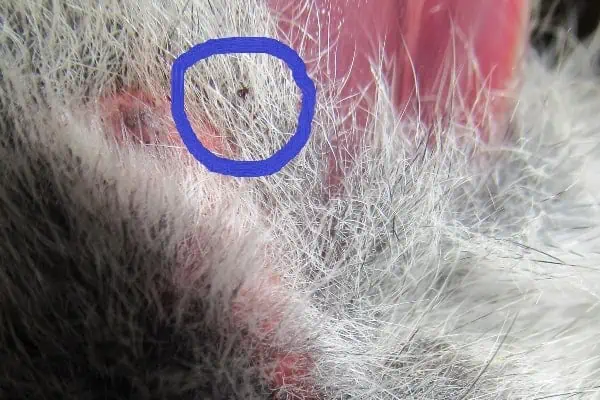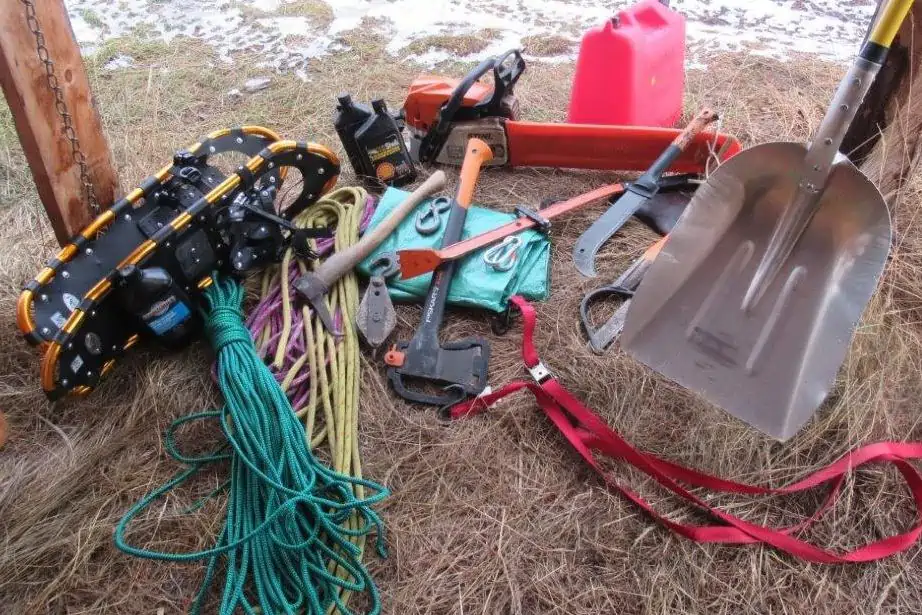
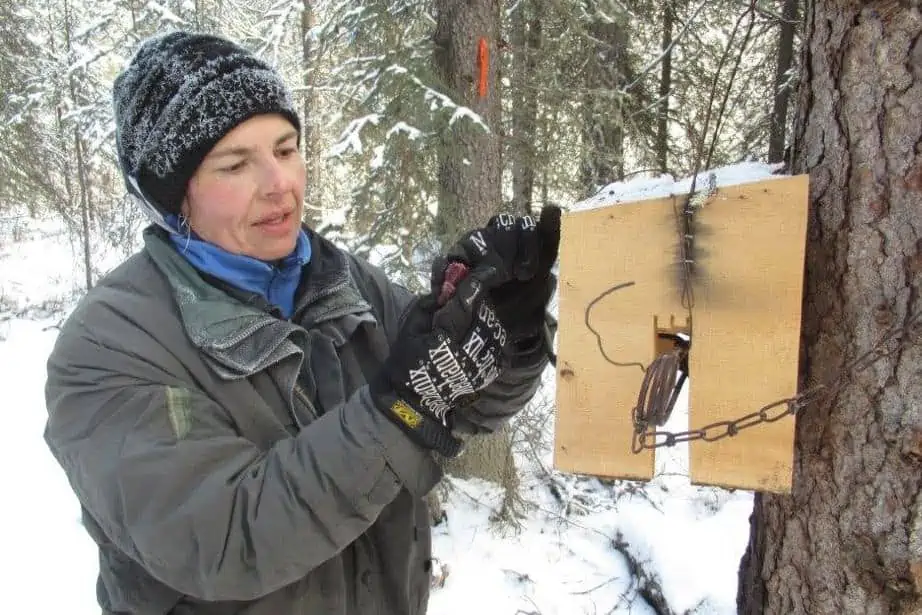
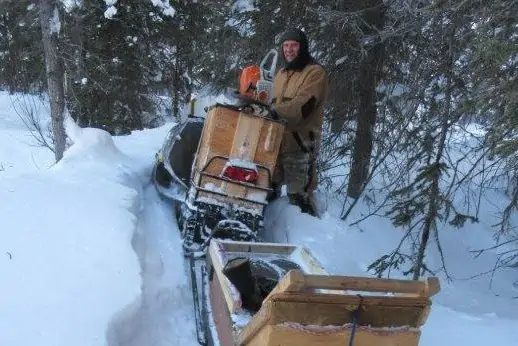
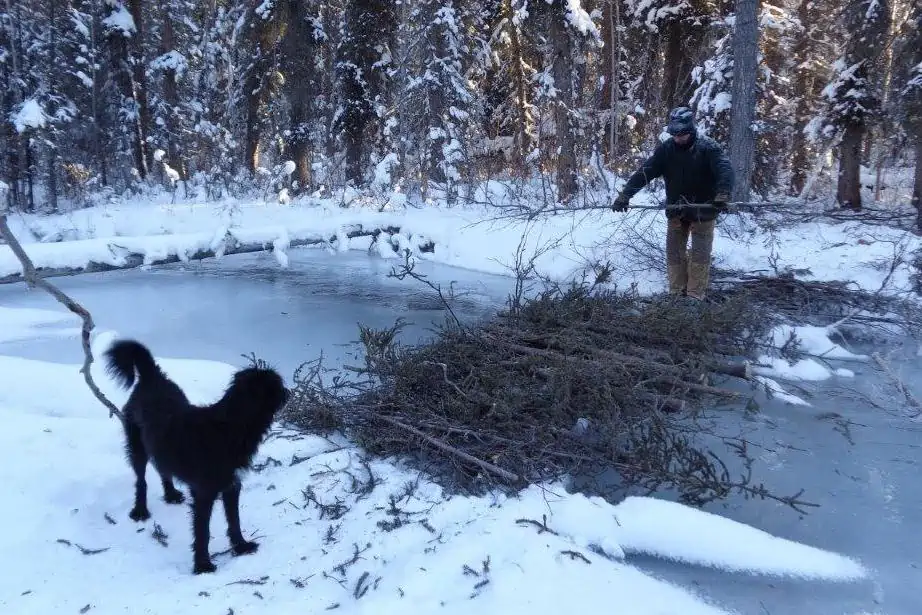
Dogs, snowshoes or snow machine?
The new moon brought winter, including swans and more ducks taking a rest on our little lake. The clouds are becoming a greyish-white sheet, and the rain is turning into wet snow.
Every year, we wonder what kind of trapping season we’ll have: Will it be easy and sunny, or grey and snowy?
So what does it mean when I say, “I’m going to break trail”? It means it is the first time, this season, that I’ll go on the established trapper trails—trails that were made by man (Bushwhacking, anyone?) or by wildlife, which are called game trails. You could go with a dog team or take your snowshoes.
The team out here is just the two of us, and if you want to snowshoe, you’ll need a good sled to pull (it’ll be heavy with the chainsaw, extra fuel and oil, and later on with the traps and bait and extra marten boxes), and you know you’ll be on the trail all day long before getting to a line cabin.
For steep hills, you can’t go without ski poles. The sled and poles will have to be dropped when there is a tree to cut out. It’s possible, but not very comfortable, working with the chainsaw while wearing snowshoes. Snowshoeing by itself is a really great workout, but actually the workout for us, out here, is cutting trees that fall over the trail. We want to keep our trail as straight as possible, otherwise we’ll end up with another kilometre of trail, all of a sudden. Hence, we are using snow machines.
Once we have about 40 centimetres of snow on the ground, we’re good to go. That might be at the beginning or middle of November. We’re anxious to start, as trapping season opens November 1 for most fur-bearing animals, and that is usually the best time because around Christmas there’s always a quiet spell.
What to pack
We have two snow machines, each with a big box in the back. Into those boxes go ropes, a tarp, snap clips, gas-line antifreeze, snatch blocks, tools needed to remove trees (willow and dwarf birch, mostly), a first-aid kit and a change of clothes. If you don’t have a winch in the front of the snow machine, then you must take a come-along with you. We take two thermoses, one with tea and one with broth. Don’t forget the Mars and Snickers bars. Then there is nuts and dried fruit, sandwiches, and maybe cold burgers to pack. Also remember to take the InReach, a camera, headlamps and hot pads. The fuel, snowshoes and shovel get strapped onto the outside of the box/machine.
Time needed to break trail
Last year we needed four hours for every seven kilometres of trail! Every few metres, there was a tree that had to be cut out because we couldn’t ride over it with the Ski-Doo. November is quite dark, too, so you’d want to leave as soon as there is enough daylight, usually around 9 or 9.30 a.m. That’s when you get your exercise, breaking trail in November and early December.
Our area, in the Pelly Mountains, has many steep, long hills, so sometimes we’ll have to strap on the snowshoes, anyway, and go up that incline twice to make it wide enough for the Ski-Doo. We then have to leave the trail overnight so it will harden enough for the machine. Small creeks flow down the hillsides, and sometimes they’re too deep from last year’s spring thaw, or they are not frozen over yet or they have a good amount of overflow on them. What we then have to do is to cut small trees and branches to build a little bridge–or fill in the creek with snow. It’s not fun getting the Ski-Doo all wet underneath (no heated workshop out here!). All that overflow turns to ice underneath the machine and adds to the weight. And the next morning I have to carefully chip it off so that the snow machine can run smoothly again.
If we can’t make it to a line cabin before dark (in November, you’d want to be at a shelter by 3 p.m.), we might decide to head back home and start over the next day. That means we will be on the trail for at least four days (if everything goes really smoothly) for 40 kilometres!
Work well and you’ll end up with an awesome trail
After this initial break-in-trail event, we get to enjoy our work and can then start to set traps for marten, wolverine and lynx. In the Yukon, one has to check their traps every seven days. After the trail is in, we’ll use one Ski-Doo and a toboggan (I stand in the back of the toboggan, and therefore we save on gas).
The animals we catch will get wrapped up in towels and put into the toboggan, to be skinned back at home. I clean the bigger animals’ skulls because I am interested in how their teeth look—rotten, broken, porcupine quills in the mouth—and guessing how old they were. We have only a few otters and muskrats, so we don’t trap them. We will take a bunch of snares with us, in case we come by a wolf kill. Sometimes when the wolf pack is not really hungry and they come by a moose cow and calf, they’ll kill the calf, eat some and travel on, then come back in one or two weeks and finish it off.
We look forward to the middle of January. By then, the days grow longer real fast! And once those sunny rays shine down on your face again, it’s like you wanna go sit outside and take it all in (-30 C won’t be a bother!). Once we get a lot of sun, the animals’ fur will change, too: the fur-grading specialist would call a second-to-last-stage “late pelt with poor finish, little or no underfur, dark-coloured leather.” Usually we’ll stop trapping marten if we catch too many big females or if there’s too much sun, usually at the beginning or middle of February. We’ll keep checking the bigger animal traps and snares for a few more weeks. Knowing how the fur graders want the pelts prepared and keeping up on the changes (for example, how to skin) will add greatly to the income at auction.
Sew long fur now,
Sonja Seeber, Yukon trapper

